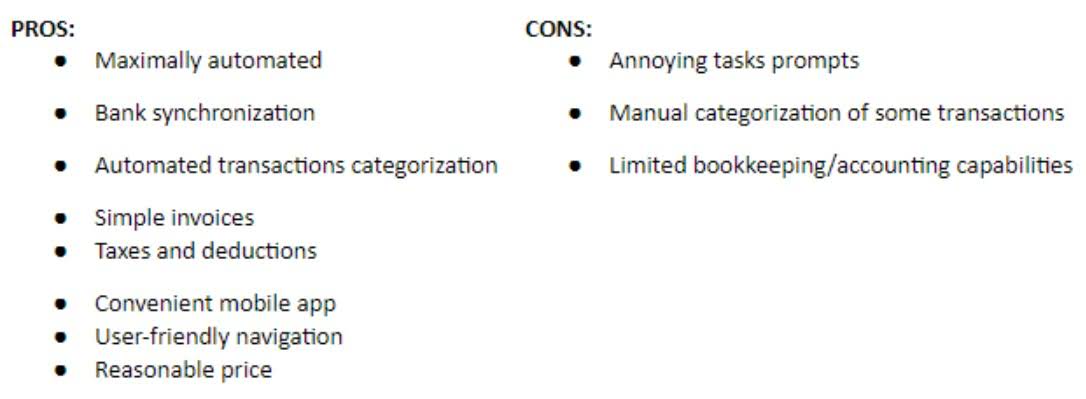For example, the likelihood of being caught if a company does not comply with the law (i.e., does not file a return, does not collect the tax) is not a valid reason for not recording the liability. In addition, if an assessment is pending, the tax practitioner must assume all the evidence will be reviewed by the examiner when determining the likelihood of the outcome. When exactly will financial institutions currently using FAS 5 and FAS 114 as their guidance need to begin applying CECL? Review by the external auditors — Bottom line, make sure you have proper documentation on file to support your accrual. It may be several months before the auditors will review your documentation.
Unfortunately, many companies may not have properly accounted for their FAS 5 reserve. It is important to understand the definition of a contingency. In March 1975, the FASB issued FAS 5, outlining the appropriate accounting for contingencies.
While a 2023 deadline for non-SEC filers might sound like a long time to prepare, SEC filers that have already gone through CECL preparations have encouraged other financial institutions to begin preparing early for the change. Make yourself at home – we hope you enjoy being part of our community. DiCOM Software is now part of Abrigo, giving you a single source to Manage Risk and Drive Growth. Make yourself at home – we hope you enjoy your new web experience. Alvarez & Marsal Taxand is a founding member of Taxand, the first global network of independent tax advisors formed in 2005 by small group of highly respected tax firms around the world. Alvarez & Marsal’s broad expertise in sales and use tax helps us resolve issues for our clients as quickly as possible.
Please Sign in to set this content as a favorite.
Abrigo’s ALLL.com resource website has many articles and other aids for calculating the FAS 5 portion of the ALLL for financial institutions not yet subject to CECL, FASB ASC Topic 326, Financial Instruments – Credit Losses. One of the more confounding items that public companies must now deal with in the sales and use tax area is Financial Accounting Standards Statement Number 5 (FAS 5), Accounting for Contingencies. This statement was issued over 30 years ago by the Financial Accounting Standards Board (FASB). But because of growing investor interest in reliable financial statements, accounting firms have increased their focus on determining fas 5 whether public companies are properly accounting for contingencies.
CECL backtesting: What it is & how to avoid 6 common mistakes
Alvarez & Marsal Taxand, LLC has offices in major metropolitan markets throughout the United States, in addition to London, England with the recent launch in 2007 of Alvarez & Marsal Taxand UK LLP. PwC refers to the US member firm or one of its subsidiaries or affiliates, and may sometimes refer to the PwC network. This content is for general information purposes only, and should not be used as a substitute for consultation with professional advisors. Each institution must consider its own size and complexity in determining the most appropriate approach to CECL. However, Abrigo’s ALLL/CECL solutions (MST Loan Loss Analyzer, which Summit Community uses, and Sageworks ALLL, which Camden uses) have been identified by the ABA as best-in-class solutions that meet the operational needs of financial institutions as they prepare for CECL compliance deadlines.
Companies should ensure all sales and use tax contingencies required by FAS 5 are accrued for and fully documented. However, given the nature of sales and use taxes, estimating the contingency can be challenging. You can continue to count on the world-class Investment Accounting software and services you’ve come to expect, plus all that Abrigo has to offer. For more detailed instructions and information about how to classify loans as either FAS 5 or FAS 114, ways to segment the portfolio into homogenous pools and how to document loss rates and qualitative adjustments, download the whitepaper titled How to Calculate Your FAS 5 Reserves.
Automating the ALLL ahead of CECL
- PwC refers to the US member firm or one of its subsidiaries or affiliates, and may sometimes refer to the PwC network.
- It is important to understand the definition of a contingency.
- Hence, further research is needed in order to understand differences and similarities between accounting standards of the two countries in greater detail.
- This statement was issued over 30 years ago by the Financial Accounting Standards Board (FASB).
You can download the paper by clicking the button above. The ALLL.com website also has information about the benefits of automating the allowance for loan and lease losses calculation ahead of CECL.
FAS 5 definition
In response to rapid development in the economy, the Malaysian Accounting Standards Board (MASB) was established in 1997. The board is responsible for developing accounting standards and continually improving the quality of external reporting in Malaysia. In the development process, constant reference is made to the work of national standard setters of other countries and the International Accounting Standards Committee. This study finds no significant difference in the basic accounting principles, assumptions and reporting format between U.S. However, some differences in rules regarding specific accounting elements have been identified.
- You can continue to count on the world-class Investment Accounting software and services you’ve come to expect, plus all that Abrigo has to offer.
- Once it has been determined that a contingency exists and that it must be disclosed, the contingency must be estimated.
- Reserves made for general issues or unspecified business risks are not permitted.
- In March 1975, the FASB issued FAS 5, outlining the appropriate accounting for contingencies.
- Alvarez & Marsal Taxand, LLC, an affiliate of Alvarez & Marsal, a leading global professional services firm, is an independent tax group comprised of experienced tax professionals dedicated to providing customized tax advice to clients and investors across a broad range of industries.
- Choosing a solution that can calculate both the ALLL now and the allowance for credit losses under CECL will make it easier as financial institutions transition to CECL from FAS 5 and FAS 114 (guidance on accounting for impaired loans under the incurred loss method of GAAP).
Search All Topics
If one or both of these conditions are not met related to a contingency, disclosure of the contingency must be made when there is at least a reasonable possibility that a loss or an additional loss may have been incurred. The disclosure must indicate the nature of the contingency and estimate the possible loss or state that such an estimate can not be made (paragraph 10). “Reasonably possible” is defined in paragraph 3 as “the chance of the future event or events occurring is more than remote but less than likely.”
What is the difference between FAS 5 and FAS 114 loans?
Hence, further research is needed in order to understand differences and similarities between accounting standards of the two countries in greater detail. Once it has been determined that a contingency exists and that it must be disclosed, the contingency must be estimated. FASB Interpretation No. 14 (FIN 14) provides an interpretation of FAS 5 on how to provide for a reasonable estimation of the amount of a loss. But although guidance is provided on pending litigations and the use of ranges to estimate the liability, FASB does not provide substantial guidance on methods that may be used to calculate the contingency.
Assessing contingencies today
Abrigo enables U.S. financial institutions to support their communities through technology that fights financial crime, grows loans and deposits, and optimizes risk. Abrigo’s platform centralizes the institution’s data, creates a digital user experience, ensures compliance, and delivers efficiency for scale and profitable growth. Another plus of automating the ALLL was that the platform Camden selected included methodologies appropriate for both the incurred credit loss model and for the expected loss model under CECL. Choosing a solution that can calculate both the ALLL now and the allowance for credit losses under CECL will make it easier as financial institutions transition to CECL from FAS 5 and FAS 114 (guidance on accounting for impaired loans under the incurred loss method of GAAP). In accordance with FAS 5, these non-impaired loans are grouped into homogenous pools, or groups of loans with similar risk characteristics, when measuring estimated credit losses. They are evaluated collectively, considering both quantitative (historical losses) and qualitative measures, which come in the form of environmental adjustments, in order to determine appropriate reserve levels.





